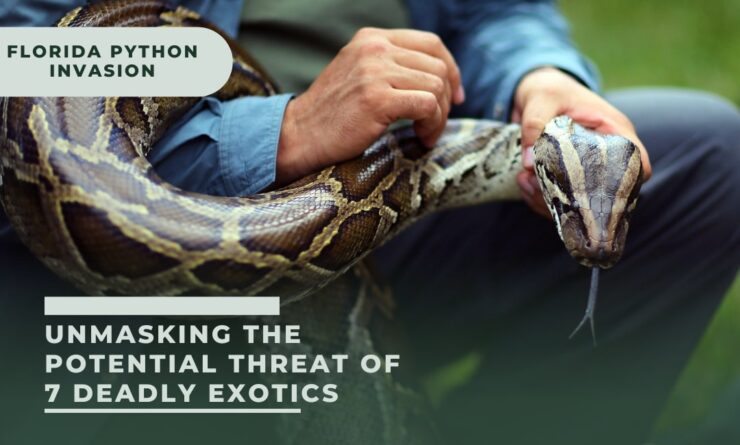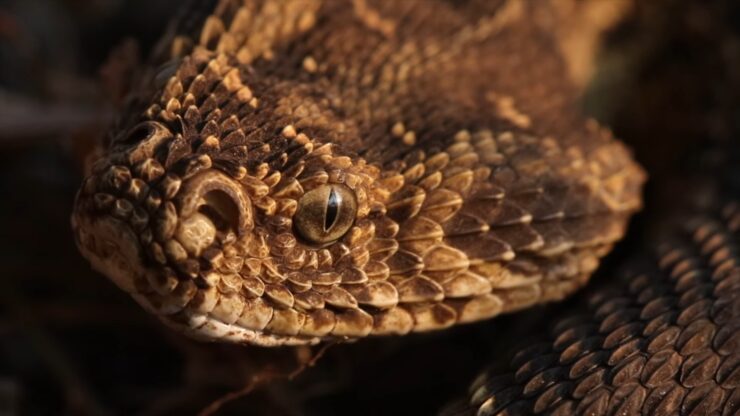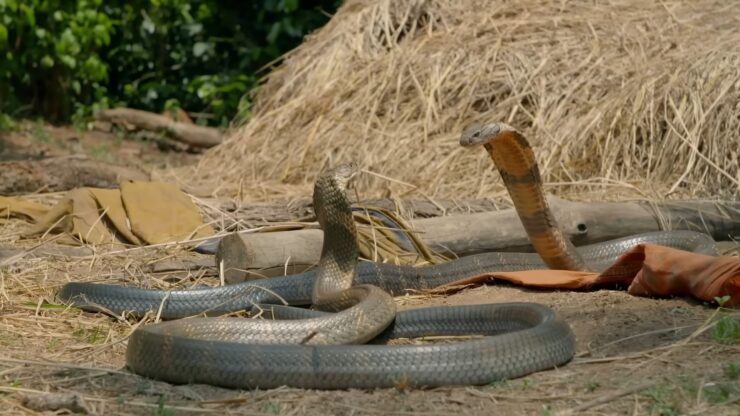Florida is not just dealing with Burmese pythons; the state is teeming with invasive species. From Sambar deer on St. Vincent Island to rhesus macaques in Ocala, Nile monitors in Cape Coral, Vervet monkeys near Fort Lauderdale-Hollywood International Airport, and thousands of monk parakeets statewide, Florida is a hotbed for foreign fauna.
These creatures arrive through various channels: illicit trafficking, pet owners releasing their oversized exotic animals, accidental escapes, or even deliberate releases to establish a wild population.
While most of these invasive species are more of a nuisance than a threat, the problem lies in Florida’s ability to sustain almost any species that finds its way there. If a dangerous creature gets loose, it poses a significant problem.
The risk of other hazardous species, besides the Burmese python, establishing a foothold in Florida is always present.
If Burmese pythons from across the globe can thrive here, why not the larger green anaconda from South America? Or crocodiles? Or venomous snakes?
Here’s a rundown of some potentially dangerous creatures that could find their way into Florida’s swamps, forests, canals, or ponds, and possibly even your backyard. Be warned: some may already be here, even if not fully established.
Table of Contents
ToggleNile Crocodile: The Stealthy Hunter
Nile crocodiles are notorious for their sudden, lethal attacks on unsuspecting prey along African riverbanks. These creatures are born hunters, perfectly adapted to their environment.
They lie in wait, camouflaged in the water, before lunging at their prey with terrifying speed and power. At least four Nile crocodiles have already been captured in Florida, and a 2016 scientific report confirmed that these creatures could establish themselves in the state.
Unlike their American counterparts, Nile crocodiles can grow larger, prefer freshwater habitats, and are significantly more aggressive. Their predatory nature and adaptability make them a potential threat if they were to establish a significant population in Florida.
Saltwater Crocodile: The Powerful Predator
The saltwater crocodile, the largest living reptile, is a known human predator with the most powerful bite of any animal. Its natural range is vast, stretching from India to Australia and many places in between.
These creatures are highly adaptable, able to tolerate both saltwater and freshwater environments.
This often puts them in rivers and estuaries, bringing them into close contact with humans. If you find yourself in the water with a large “salty,” you’re likely seen as prey.
Their formidable size, strength, and aggressive nature make them a potential danger if they were to establish a presence in Florida.
Black Caiman: The South American Giant
Black caimans, the largest member of the alligator family, live in South America. They can reach lengths of 19.5 feet and occasionally attack humans.
Despite their size and potential for aggression, they do not attack humans with the frequency of Nile and saltwater crocodiles.
Their cousin, the spectacled caiman, is already established in Florida, primarily due to the pet trade. The presence of the spectacled caiman in Florida suggests that the black caiman could also potentially establish a population in the state, given the right conditions.
Reticulated Python: The Lengthy Constrictor
The reticulated python, the world’s longest snake, has been reported in at least eight different areas of the state. Native to Southeast Asia, these snakes are one of the few species known to prey on humans.
They are powerful constrictors, capable of overpowering and consuming large prey. Their size and strength, combined with their adaptability, make them a potential threat if they were to establish a significant population in Florida.
Green Anaconda: The Heavyweight Serpent
Green anacondas, the world’s heaviest snakes, have also been sighted in Florida, usually around central Florida. They are apex predators from South America capable of taking large prey in the same way Burmese pythons do.
Their size and strength make them formidable predators. While sightings have been reported, they have not yet established a significant population in Florida. However, the potential for them to do so remains a concern.
Black Mamba: The Venomous Threat
The black mamba is the second-longest venomous snake in the world, and its venom can cause death in humans within hours if not treated with antivenom. These snakes are native to Africa and are known for their speed, agility, and potent venom.
In January, FWC’s Division of Law Enforcement filed charges against eight people in connection with illegal trafficking of venomous and prohibited snakes, including black mambas. The potential for these dangerous snakes to establish a population in Florida is a serious concern.
King Cobra: The Venomous Monarch
In 2017, a man from Monterery Park, California, was arrested on charges of smuggling three young king cobras from Hong Kong in potato chip canisters.
The King cobra, the largest venomous snake in the world, can grow to 18 feet long, though it’s usually about 8 to 10 feet. Its venom is a potent neurotoxin and can lead to death quickly if the victim doesn’t receive antivenom.
King cobras are native to parts of India, Southeast Asia, and the Philippines, and are known for their impressive size, potent venom, and distinctive hood. They have been reported in the state back in the early 2000s, but have not become established.
However, the potential for these dangerous snakes to establish a population in Florida is a serious concern. In 2015, an Orlando-area man lost his king cobra. It wasn’t the first time he’d lost a venomous snake. It was recovered in his neighbor’s garage after being missing five weeks.
Source:
https://news.yahoo.com/scary-state-could-7-deadly-090122726.html











